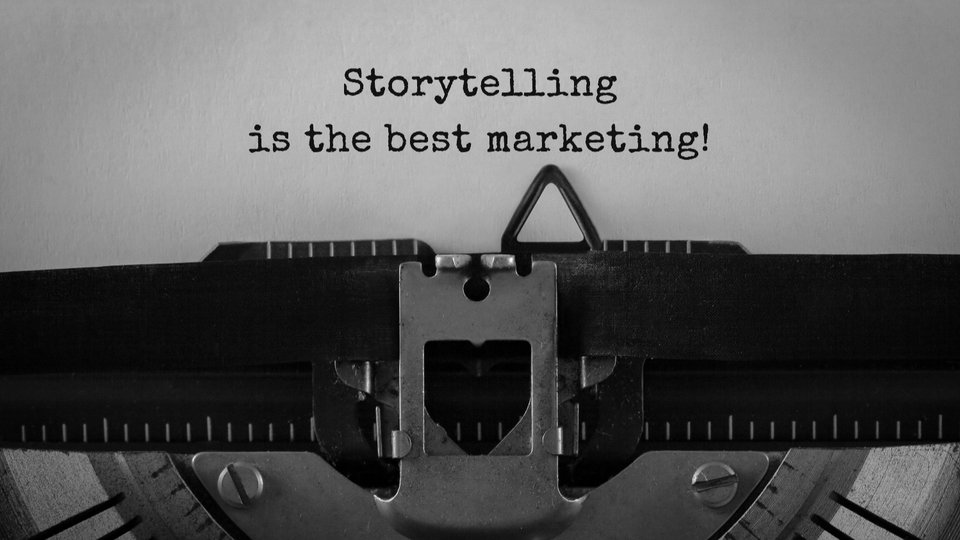Marketing
Tailor the customer journey with human-centric storytelling that makes an impact

March 11, 2025 by Chris Bretschger — CEO-Managing Partner, Bastion
The online experience includes a myriad of product and service ads that bombard consumers on virtually every channel. From Facebook to Google to Instagram, they've become immune to the effects of modern advertising, leaving them wanting authenticity from the brands they support.
How can your brand cut through the noise? Storytelling. With effective storytelling techniques, you can build an emotional connection and inspire action. Here's how.
Know your audience
Effective brand storytelling isn't just about knowing how to tell a good story. You have to incorporate emotional elements that wrap your audience up in the story and its characters, but that requires knowing who your audience is and what appeals to them.
Market research is a key part of the process. This tells you who your ideal customers are and what they're looking for from your products or services. With these insights, you can find out their gender, age, location, occupation, income level, and specific information like their pain points, challenges, goals, and behaviors. That helps you build a narrative that speaks to them.
Mapping the customer journey
Storytelling can seem intimidating when you're thinking about a business-focused brand, but it's easier when you think of it in terms of storytelling elements. All stories are a version of the seven main story types, including the familiar framework of the "hero's journey" that shapes many stories, from Star Wars to Harry Potter.
Your story won't involve wizardry or intergalactic space battles, but understanding how the hero's journey shapes how the story unfolds can help you develop the purposeful elements that pertain to the customer journey.
Here's an example:
- The awareness stage is when a customer becomes aware of their problem and possible solutions to it. This is an opportunity to introduce your brand and products with engaging content that offers real-world value.
- The consideration stage is when a customer has investigated the options and found the best possible solutions. Like the hero of the story, the customer has to overcome challenges to choose the right solution, which you can help with case studies and customer testimonials.
- The decision stage is when the hero accepts the challenge and starts their quest, or when the customer makes a decision to complete a purchase. Personalized content like first-time promotions, product demonstrations, or free trials can help them feel more confidence about their decision.
- The retention stage is when heroes reach their happy ending. For you, this is when the customer has completed a purchase, so you can share personalized offers or follow up with emails to see how they're liking the product.
- The advocacy stage is when the journey comes to an end with a loyal brand advocate that's happy to share their experience with your brand through word-of-mouth recommendations. You can nurture this stage with reviews and testimonials.
Crafting the narrative
The story for the customer journey should be structured and emotionally enticing, just like any story. Based on the hero's journey framework, this turns the customer into the hero of the story with a challenge they have to overcome — one your brand can solve. For example, a new business owner may have just launched their start up and needs Instagram marketing services to get the word out.
You could also try the problem-solution format, which presents a relatable problem that most of your customers have, as well as how your product or service can be a solution. For example, a fitness brand may have a lot of busy customers that need help fitting workouts into their schedule, so the stories focus on efficient 10- or 20-minute workouts that can be completed anywhere.
Remember to include inspiring language and details that stir the senses to make the story more engaging. For example, a hotel brand could highlight their sunny tropical getaway with words like "balmy," "lush," or "sun-soaked," creating desire for travelers.
However you tell your story, the authenticity is what matters most. Include genuine stories with genuine emotions, such as real customers sharing their struggles and their happiness at finding solutions that work.
Bringing the story to life
Storytelling should have interactive elements and visuals as much as possible. Include photos, videos, and graphics that align with your brand's personality. For example, a yoga studio may use soft color palettes, soothing music, and movement animations to mimic the in-person experience of taking a class.
Some brands may be able to use interactive features like polls or quizzes to engage the audience in the content. For example, Fabletics uses quizzes to help customers pick activewear based on fitness goals.
User-generated content is another good option to create social proof through customer reviews and stories. GoPro uses this successfully by showcasing customers' videos and candid shots to show how their product enriches their lives.
Enhance the customer journey with storytelling
Storytelling has been part of the human experience since the dawn of time.
Crafting stories that are tailored to each stage of the customer journey can nurture emotional connections that not only inspire a purchase but foster lifelong brand loyalty.
About Chris Bretschger
Chris Bretschger, Managing Partner at Bastion Agency, is a seasoned marketer with over 20 years of experience in integrated marketing. He has developed brand strategies, managed media campaigns, and built analytics tools for clients like Mazda, Adidas, Jenny Craig, and Kia. When not leading Bastion, Chris enjoys superyacht regatta racing on the open seas.
